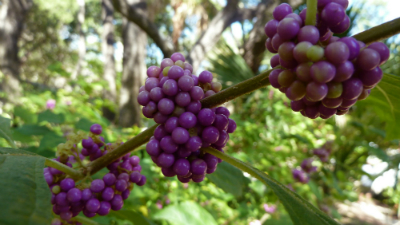
bringing nature, nurseries and gardeners together September 11, 2020
|
|
Apologies, readers, for this very concise version of the Austin Garden. I am a teacher, and with the return of school I have been struggling to find time to keep up with publishing this newsletter. But it will return in its usual, fuller form soon. Many thanks for all of your support. - Darrel Mayers
 September in the Garden
by Chris Winslow
With the rains of this week, and the 'winter' of Wednesday night, we have now entered a period of transition as we move from the doldrums of summer into what can often be one of the busiest of seasons for central Texas gardeners. Many are the jobs to be done!
1. Cut back annual summer flowers, mulch, and feed. We have approximately 75 to 90 days till the first frost . . . plenty of time to get a renewed flush of color.
2. Although we have had some rainfall this week, you should still keep an eye on the weather forecast, and be ready to water your trees, shrubs, turf grass and landscape beds when everything dries out again. Slow, deep watering will encourage a deep root system and make your landscape more able to withstand drought.
3. Plant new vegetables for fall and winter harvests during the last week of this month: broccoli, cauliflower, Brussels sprouts and cabbage.
4. Buy bulbs. The season to plant tulips, hyacinths, crocus, jonquils, daffodils, grape hyacinths and anemones is just around the corner.
5. Mulch all beds and trees with compost mixed with mulch. This mixture will protect plant roots from heat and cold extremes, and conserve water.
6. Inspect trees for fall webworms, and if you find them, come up with a strategy to get rid of them using Thuricide or Dipel.
7. Fertilize lawn towards the end of the month. (Use organic fertilizer.)
8. Be on ‘brown patch alert’ for your grass, and be ready to treat this disease with the organic Actinovate.
9. Keep on the lookout for a world of fall bedding (annual) plants. As temperatures cool, we can begin to plant dianthus, snapdragons, and petunias.
10. Watch for black spot and mildew on roses. With cooler weather, these pesky rose diseases will begin to show up. An organic spray of Neem oil or wettable sulfur should help in keeping it at bay. ❦
|
 It's About Thyme Legacy Publications.
Contact newsletter editor Darrel Mayers with any ideas for articles or interesting links at internationalrain@yahoo.com (hitting 'reply' to this email won't work) |
|
|